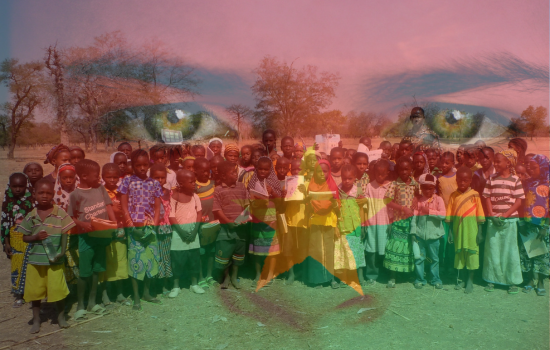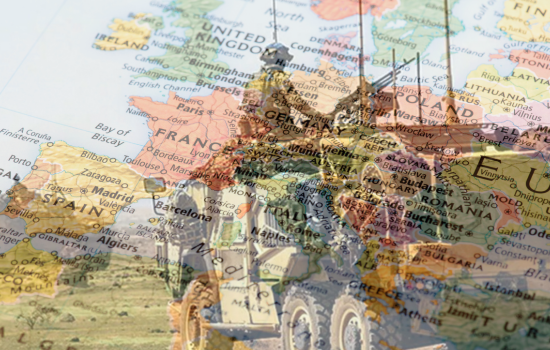Book Review: Coalitions between Terrorist Organizations: Revolutionaries, Nationalists and Islamist
ORGANIZATIONAL AND OPERATIONAL MATTERS
In his introductory chapter, Karmon rightly notes that there has been “a paucity of research on the subject of cooperation and coalitions between terrorist organizations” and that “[c]ase studies of specific terrorist organizations include only brief discussions of international cooperation by these organizations,” which effectively means that questions raised about such matters in the early 1970s – the most interesting of which are whether cooperation has led to the “creation of working coalitions,” whether “ideology is the main force behind the establishment and operation” of such coalitions or is “trumped by political and material interests,” and whether an alliance between terrorist groups is “comparable to an alliance between states” – still “remain unanswered” (p. 3). This book attempts to address these and other questions.
Organizationally, the book begins with two chapters that deal, respectively, with the “theoretical framework and research paradigm” and the “operative variables [and] research hypotheses” (p. 4), precisely the sort of “social science” gobbledygook that gives this reviewer a headache and provides a clear indication that this book originated as a doctoral thesis in political science. There follow three chapters on left-wing terrorist organizations in Germany, Italy, and France, and a chapter each on leftist “Euro-Terrorist” alliances in the mid-1980s, right-wing terrorist groups in Italy, Euskadi ta Askatasuna (ETA: Basque Homeland and Freedom) in Spain, and Palestinian nationalist terrorist organizations. Chapter 10 “tests the hypotheses against the empirical data to determine if they can support an original and more comprehensive theory” (p. 4). Finally, Chapter 11 “updates the theoretical findings” (p. 4) with respect to Islamist terrorist networks such as al-Qa’ida.
After providing good overviews of the factual record in his case study chapters, Karmon concludes (see Chapter 3) that of the German leftist groups only the Rote Armee Fraktion (RAF) established a bona fide coalition with Palestine Liberation Organization (PLO) factions that led to ideological, logistical, and operational collaboration during the 1970s, whereas the Revolutionäre Zellen (RZ) collaborated operationally with the Popular Front for the Liberation of Palestine (PFLP) for a brief period, and the situation regarding the Bewegung 2. Juni (B2J) remains unclear (pp. 68-71, 95). In France (see Chapter 4), Karmon concludes that Action Directe (AD) was not involved in any meaningful collective logistical or operational collusion with Palestinian groups (pp. 138-40, 156), although close personal links were apparently forged between Frédéric Oriach and the Fractions Armées Révolutionnaires Libanaises (FARL) (p. 142). This conclusion seems rather surprising given the overtly pro-Palestinian orientation of AD, especially its “international” faction, and the frequency with which the group attacked Israeli and Jewish targets in Europe. As for the Brigate Rosse (BR) in Italy (see Chapter 5), the Mario Moretti faction responsible for the kidnapping and murder of the former Prime Minister Aldo Moro cooperated ideologically, logistically, and operationally at the very end of the 1970s with al-Fatah (pp. 103-10), and other elements of the group also seem to have colluded logistically with the FARL in the early 1980s. In the mid-1980s, several leftist terrorist organizations in Europe – the RAF, AD, a BR faction known as the Brigate Rosse per la Costruzione del Partito Comunista Combattente (BR-PCC), the Cellules Communistes Combattantes (CCC) in Belgium, and the Forças Populares 25 de Abril (FP-25) in Portugal – sought to establish various joint “Anti-Imperialist Guerrilla Fronts” (see Chapter 6), a plan that only became feasible when each of the groups or factions involved acknowledged the bipolar nature of the conflict between capitalism and socialism, which some had previously denied (pp. 189-90). These grandiose schemes eventually came to naught without yielding much in the way of tangible operational collusion (p. 161). In his section (Chapter 7) on neofascist, Evolan, and “third position” groups in Italy, Karmon concludes, perhaps erroneously, that despite their increasing espousal of philo-Arab and pro-Palestinian attitudes, “[t]here is no evidence of any real cooperation between Italian radical right-wing and Palestinian organizations” (p. 206).6 Finally, because of ETA’s nationalist focus, desire to retain independence, and “lukewarm attitude towards international cooperation” (p. 232), there is only scattered evidence of ideological and logistical cooperation with Palestinian groups (pp. 225-27).
From the Palestinian side (see Chapter 9), it seems that both international and regional developments influenced Palestinian ideological agendas and strategic calculations, first in such a way as to induce Fatah and PFLP cooperation with European terrorist groups and later, after taking account of the attitudes of European governments and moves toward “normalization” in the Middle East, to reduce the prospect for it. Consequently, the degree and nature of such cooperation shifted as time wore on (pp. 249-51, 261, 265-67). This is hardly surprising, but Karmon provides a useful overview. Among his most interesting findings are that “there is no evidence of any public Palestinian support for a European or Western terrorist organization” (p. 275), that there were not many Europeans trained in Palestinian camps, and that “all [Palestinian] ties with foreign terrorist organizations were bilateral” (p. 276).
In Chapter 10, Karmon endeavors to summarize what he learned from the case studies to “test” the 12 hypotheses he laid out in Chapter 3. A few of his more interesting conclusions are noteworthy. First, the cases corroborated his basic thesis – the “tendency of terrorist organizations to cooperate and ally when they feel threatened” (p. 279). second, “cooperation between security forces against terrorist organizations encouraged their tendency to form coalitions” (p. 285). Third, “cooperation at all levels, and, by extension, the establishment of [terrorist] coalitions cannot take place without the existence of a minimal ideological common denominator” (p. 287), although “ideological affinity and geographical proximity are not sufficient per se for the establishment of an international coalition” (pp. 294-95). Fourth, “nationalist terrorist organizations are less likely to form international coalitions with other groups,” a claim that may be valid for ETA but – as Karmon himself reveals – is not nearly as applicable to others, especially the PLO (p. 290). Lastly, the “donor” terrorist groups that provide support to their partners do not generate “significant dependency” on the part of these latter (p. 292).
Chapter 11 focuses on a “specific aspect of the Islamist movement, namely the alliances between its various factions and streams,” and uses Usama bin Ladin’s 1998 attempt to forge a World Islamic Front for Jihad against Jews and Crusaders (WIF) as an illustrative case study for analysis (p. 309). Note that this umbrella organization was intended to be an alliance solely between Sunni jihadist groups, rather than one that also encompassed Shi’i jihadists, much less non-Muslim radicals. (Alas, one of the most potentially fruitful and worrisome Islamist collaborative ventures – the attempts to broker an alliance in the early 1990s between al-Qa’ida and Hizbullah – is mentioned only briefly on page 333, and without noting the important corroborative testimony of Jamal al-Fadhl.) Although this much ballyhooed but relatively ineffectual WIF ultimately failed to augment the operational capacity of al-Qa’ida, since the key Egyptian components were themselves beset by internal disputes over appropriate forms of struggle that eventually led to schisms, Karmon argues that his conclusions concerning secular and nationalist groups generally apply to Islamist groups as well.
In sum, this is an extremely useful book on an important topic that has the potential, depending upon how things develop, to become even more significant in the future. Karmon has provided a lot of valuable illustrative and background information in his efforts to “test” and support his theoretical conclusions. One can of course quibble about various matters, such as his rather pedantic social science approach; his failure to give due weight to the crucial analytical distinction between the attempted forging of alliances between 1) terrorist groups from within the same ideological milieu, as opposed to those between 2) groups stemming from different extremist milieus; his labeling of the RAF and other Euroterrorists as “anarchist” or “anarcho-communist” groups; and his apparent confusion concerning the differences between diverse neo-fascist currents in Italy. Nevertheless, Karmon’s study is the only extant work that deals with the question of collaboration between terrorist groups from various milieus in a focused, historically sensitive, and methodically systematic fashion, which likely will make it the starting point for most future researchers concerned with these complex issues.






